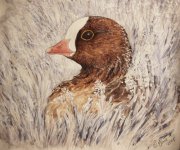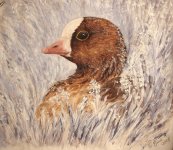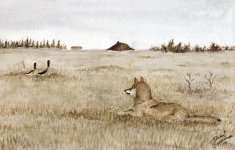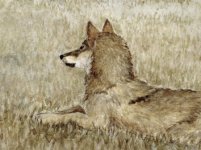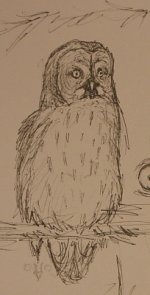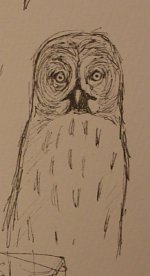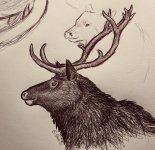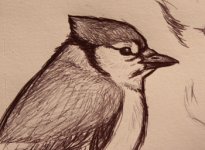EliS
Well-known member
I think it's time to call it finished... Unless someone can come up with something that could be done (I cannot move the eye though I would love to).
I edited the forehead and the beak, and worked some more on the icy grass - adding a hint of warm hues among the whites and blues in an attempt to make the goose look like it belongs to its surroundings. I think it worked.
The eyes aren't quite right yet, and that's one of the most intriquing features of the LWfG. Their eyes are almost like a deer's! Conclusion: I need to learn to do 3D eyes that look "right"! Though perhaps some other night...
EDIT: Anyone ever heard of fiddling? I guess that's what I've been doing. I got some insightful feedback from a friend of mine and decided to give it a go - getting rid of "the lines" and trying to match the beak and the forehead with the rest of the bird (my friend thought they didn't seem to match). I think I prefer this new version to the old one. I'm posting it here for comparison.
I guess that's what I've been doing. I got some insightful feedback from a friend of mine and decided to give it a go - getting rid of "the lines" and trying to match the beak and the forehead with the rest of the bird (my friend thought they didn't seem to match). I think I prefer this new version to the old one. I'm posting it here for comparison.
What I've learned is that there's still a lot to be learned in drawing and painting LWf Geese. This has been a fun process and I think I've learned enormously. I think it's high time to leave this one alone. There's bound to come the moment when I ruin it beyond repair, if I keep on going.
Too bad I need to finish my seminar work in a week - otherwise I would spend a couple of days more painting. I'd forgotten how much fun it can be to work on a single painting for a couple of days, really getting into it and taking the time to make the painting work.
Elina
I edited the forehead and the beak, and worked some more on the icy grass - adding a hint of warm hues among the whites and blues in an attempt to make the goose look like it belongs to its surroundings. I think it worked.
The eyes aren't quite right yet, and that's one of the most intriquing features of the LWfG. Their eyes are almost like a deer's! Conclusion: I need to learn to do 3D eyes that look "right"! Though perhaps some other night...
EDIT: Anyone ever heard of fiddling?
What I've learned is that there's still a lot to be learned in drawing and painting LWf Geese. This has been a fun process and I think I've learned enormously. I think it's high time to leave this one alone. There's bound to come the moment when I ruin it beyond repair, if I keep on going.
Too bad I need to finish my seminar work in a week - otherwise I would spend a couple of days more painting. I'd forgotten how much fun it can be to work on a single painting for a couple of days, really getting into it and taking the time to make the painting work.
Elina
Attachments
Last edited:




